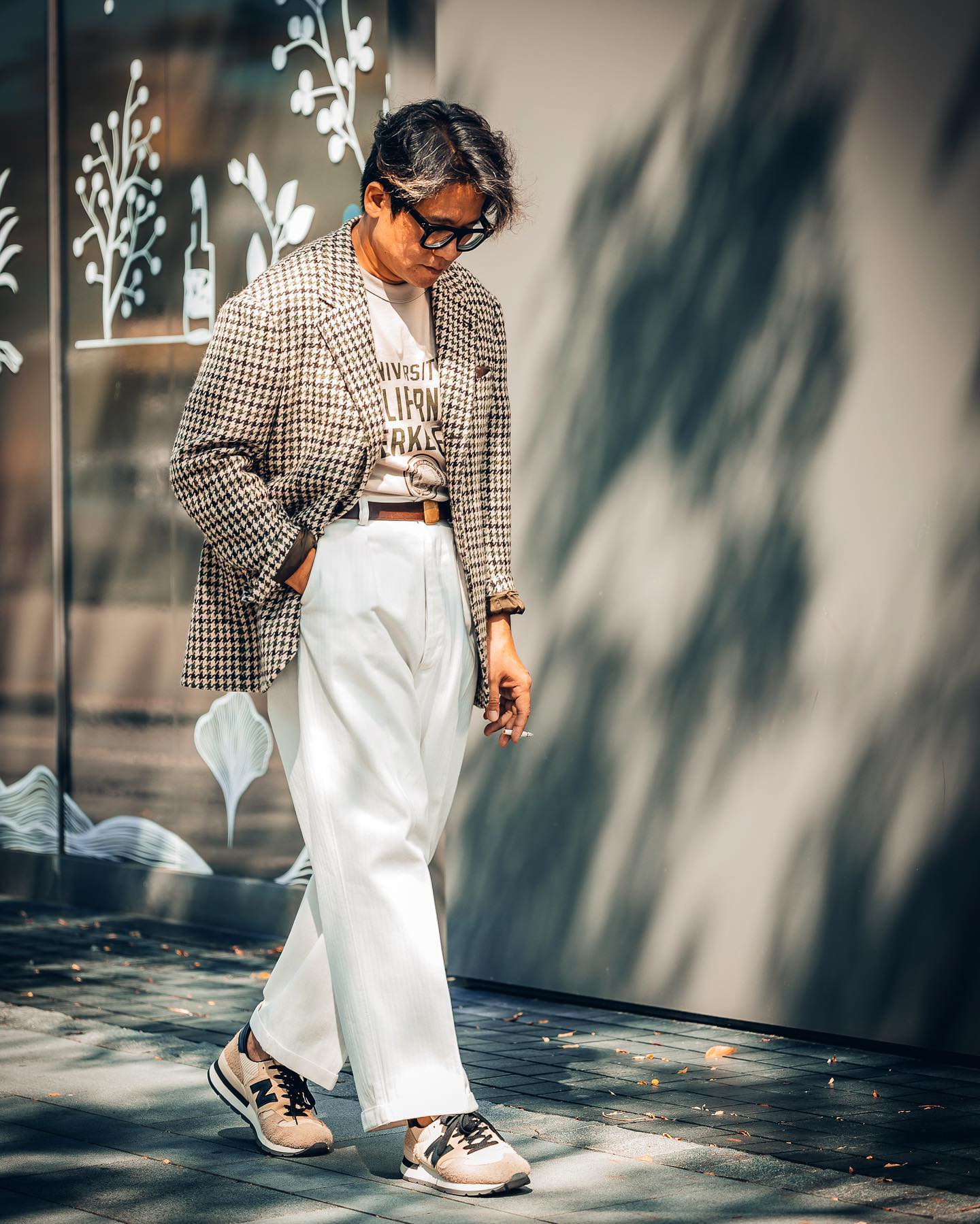How to button a Double Breasted Jacket (advanced)
Double breasted jackets come in many different layouts. Fortunately, one style of jacket allows us to compare these layouts directly. Through use of the "doppiopetto transformible," I will explore the pros and cons of the 6x1 and 6x2, and discuss how I came into possession of my own fantastic suit.
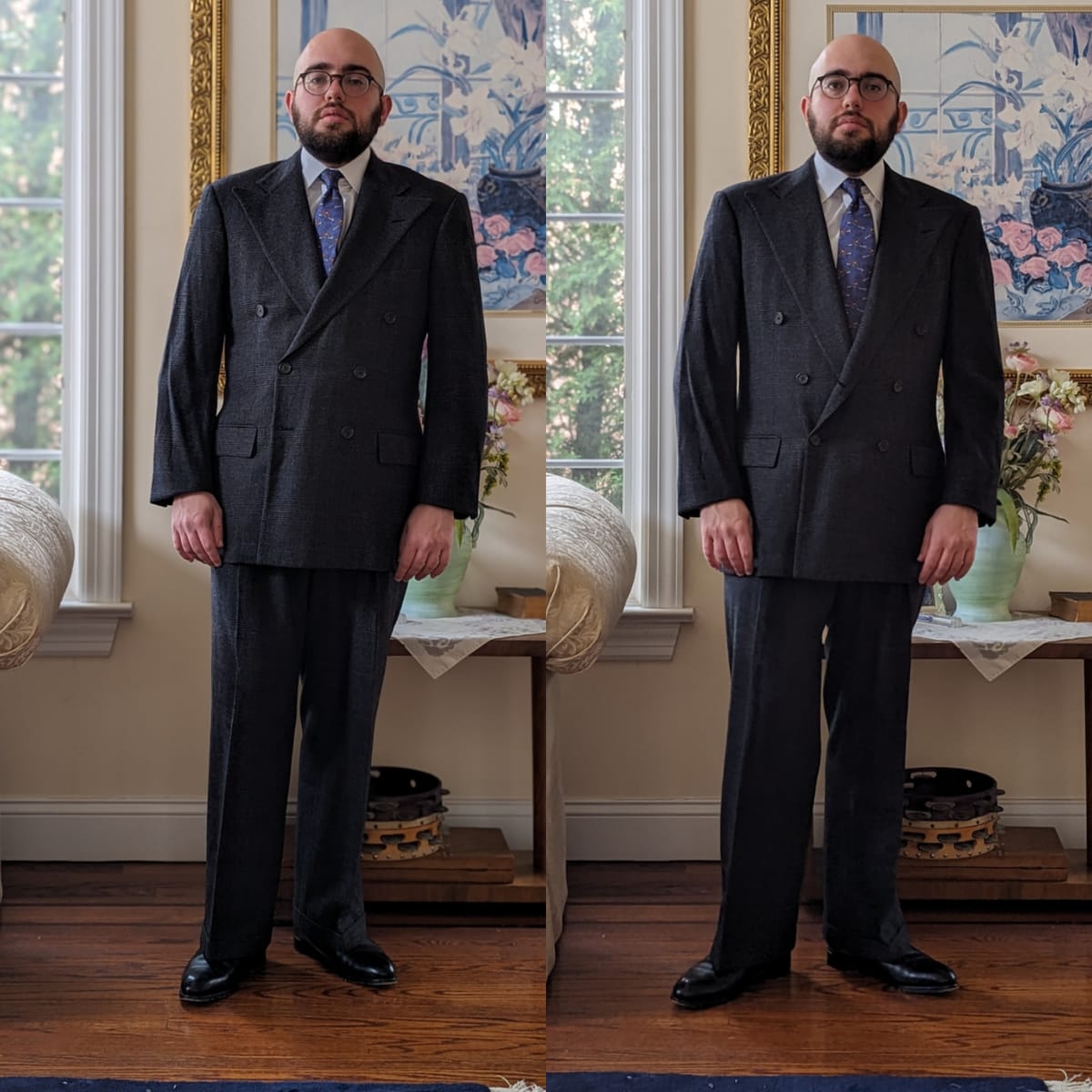
Double breasted jackets come in many different layouts. Fortunately, one style of jacket allows us to compare these layouts directly. Through use of the transformable double-breasted jacket (or "doppiopetto transformible"), I will explore the pros and cons of each layout. But let's start with the most common layout:
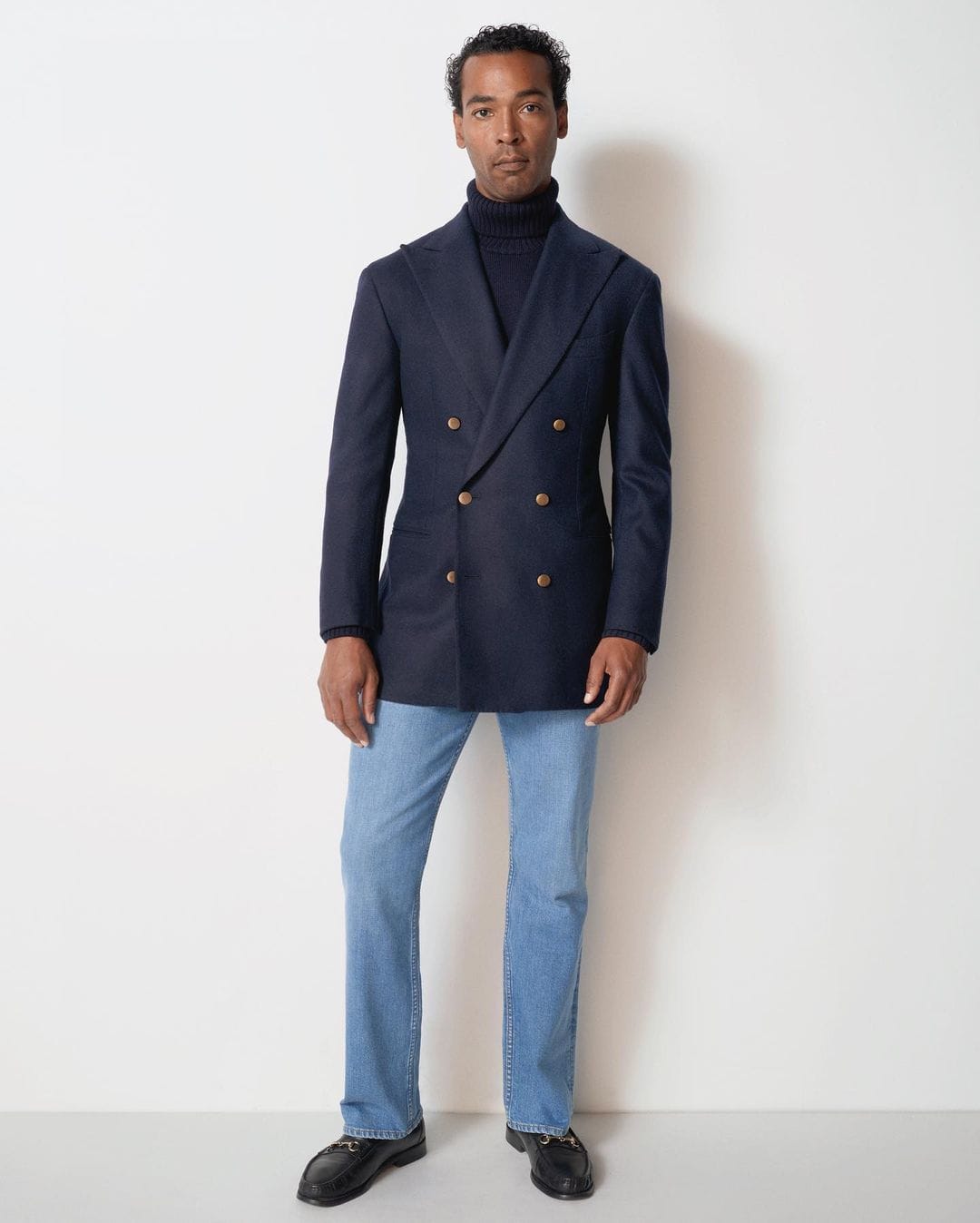
The 6x2
The straightforward way to cut a double-breasted jacket is with the button cinching the jacket at or near the natural waist; this most commonly results in a 6x2 layout, but could also be a 4x2 or a high 4x1 (which is to say, a 6x2 with the bottom row of buttons missing). The buttons naturally shape the jacket, so as long as the waist and chest are the right size, it's not too tricky to fit.
(for legibility: I tend to pronounce "6x2" as "six by two," some say "six on two," but nobody will fault you for saying "six ex two")
At some point, I found myself looking, obsessively, for a Ralph Lauren 6x2. It was a grail, for me... But I blew my expectations out of the water.
This format was most popular during the so-called "Golden Era," the 1930s and 40s, at least until fabric rationing started to affect what men actually wore. Although the buttoning point is roughly halfway down the jacket, the lapels ultimately cross one another higher up, revealing relatively little shirt while the jacket is closed. The silhouette reflects the classic proportions of a two-button single-breasted, but the jacket takes up a larger portion of the outfit; the nexus point might be 1/3 of the way down the jacket, or higher, or lower.
Which is all to say that a 6x2 can be very traditional. And they can certainly be incredible in a wide variety of ways:
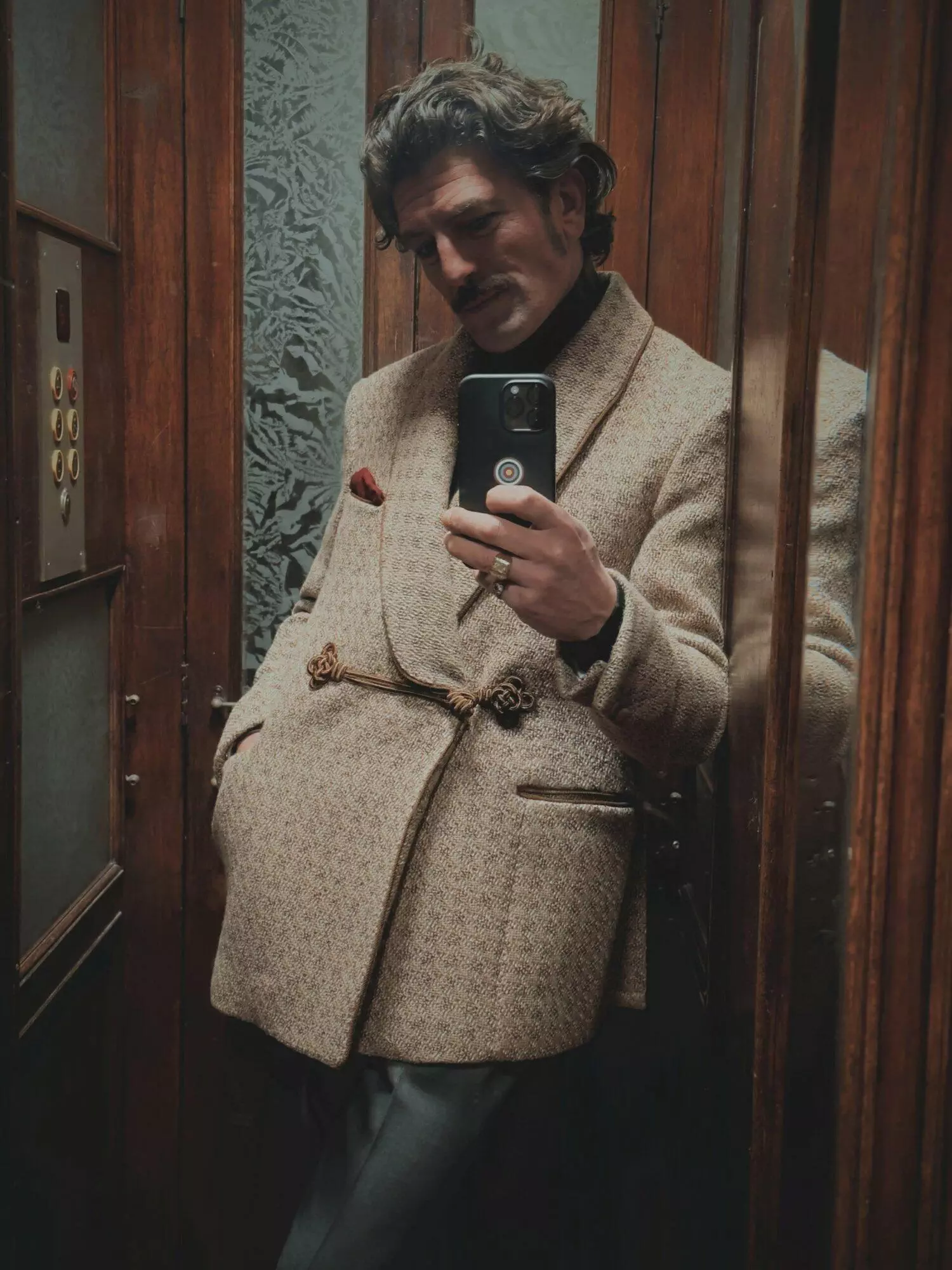
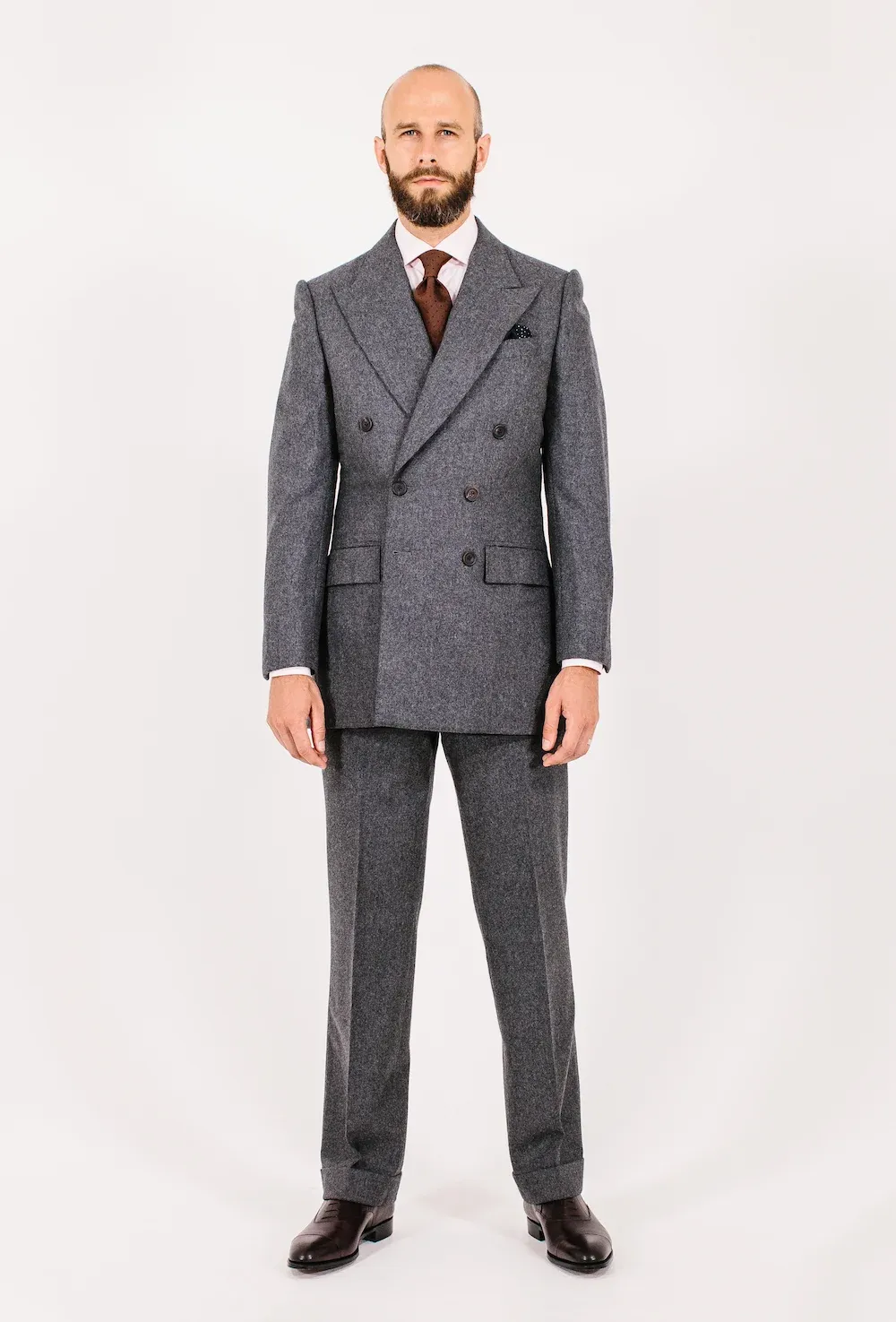
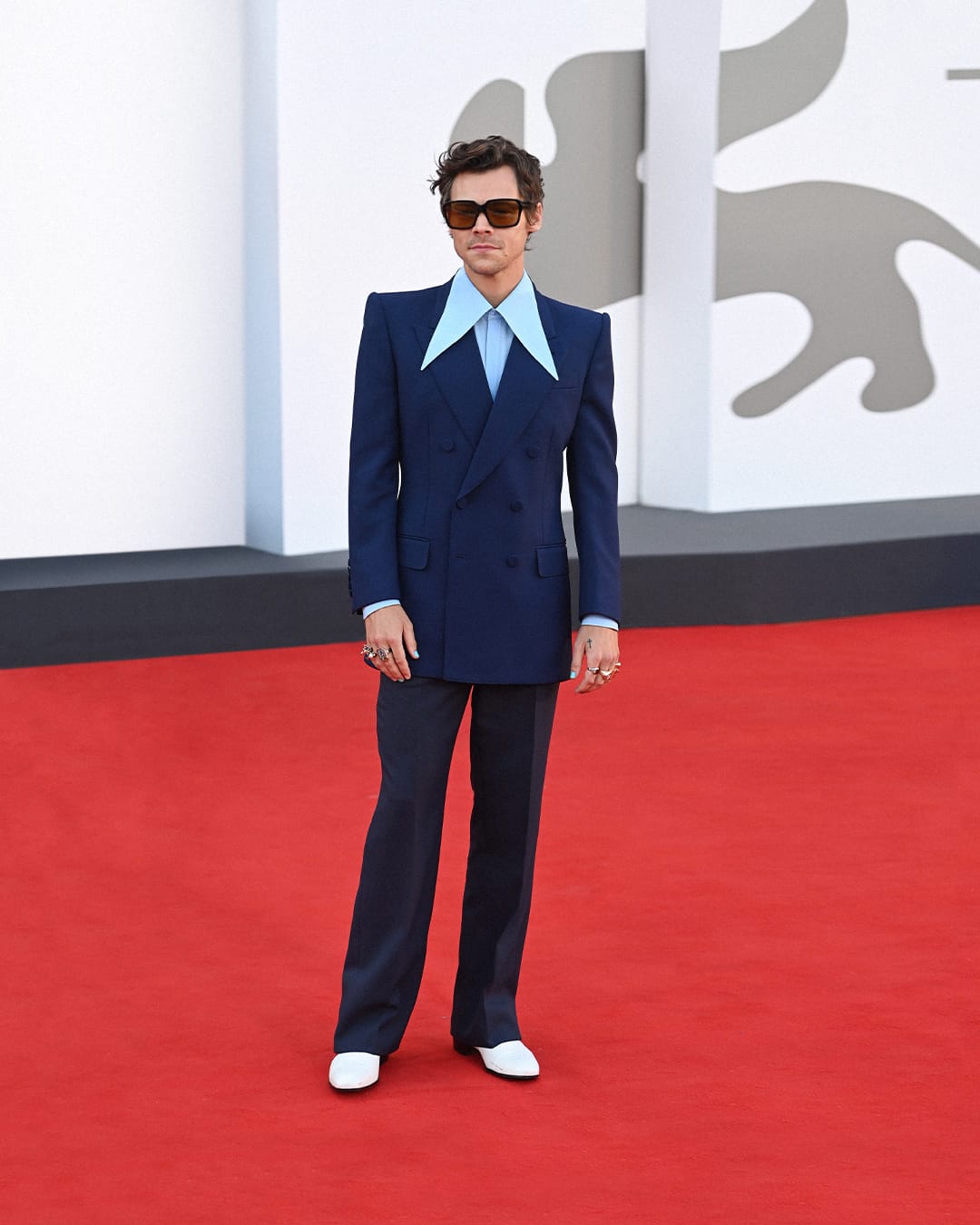
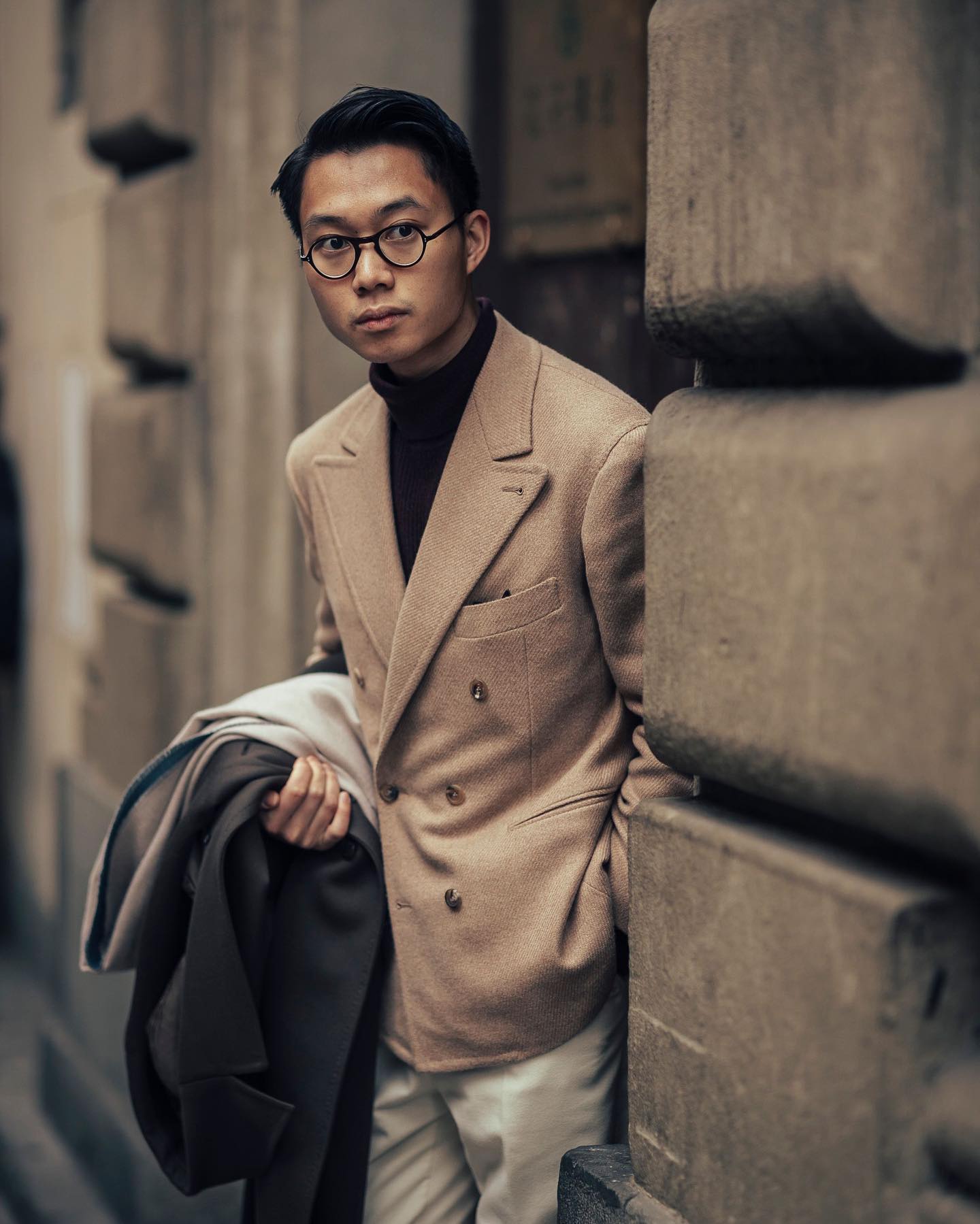
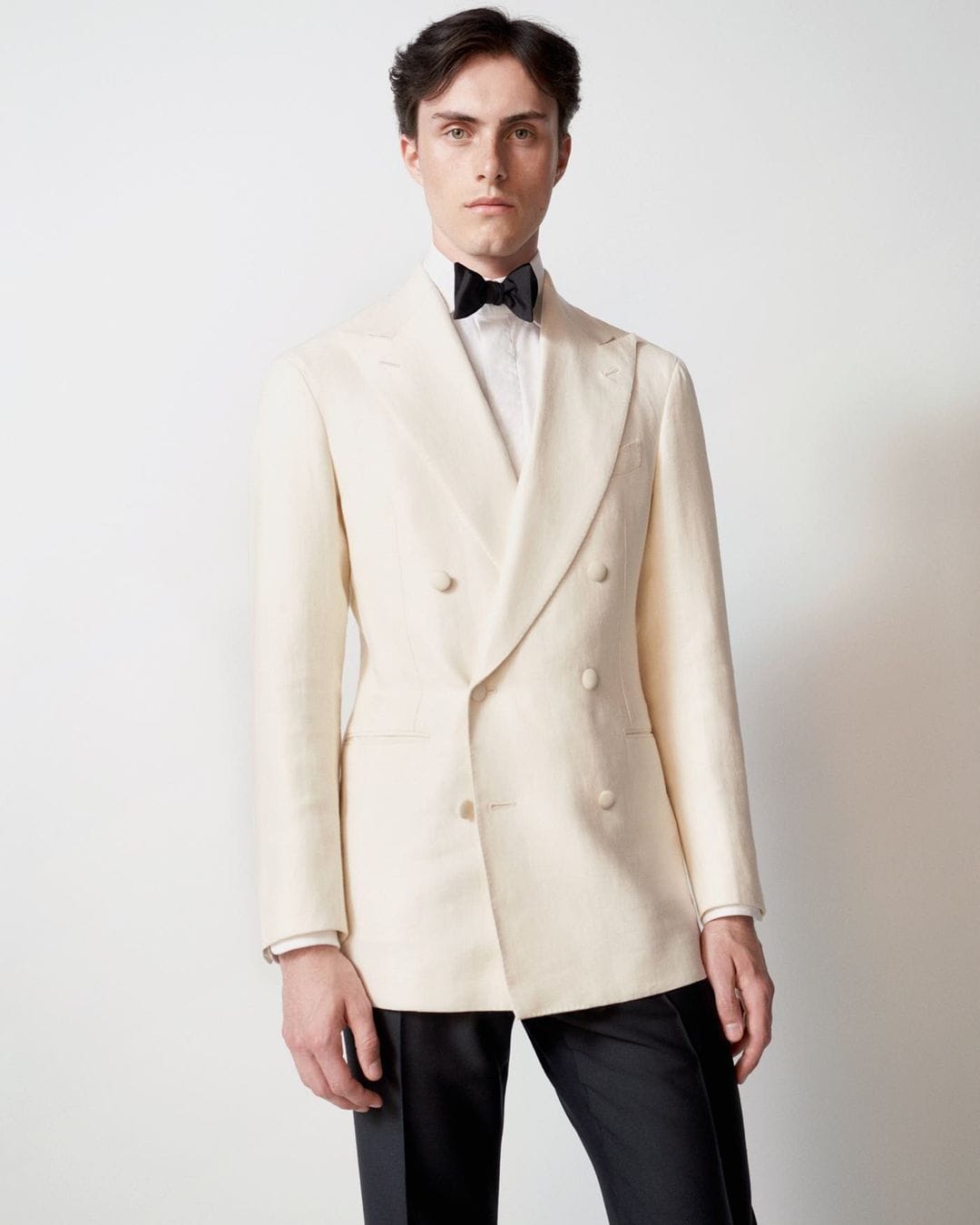
6x2 jackets from Sartoria Giuliva; Edward Sexton; Gucci; The Anthology; Saman Amel
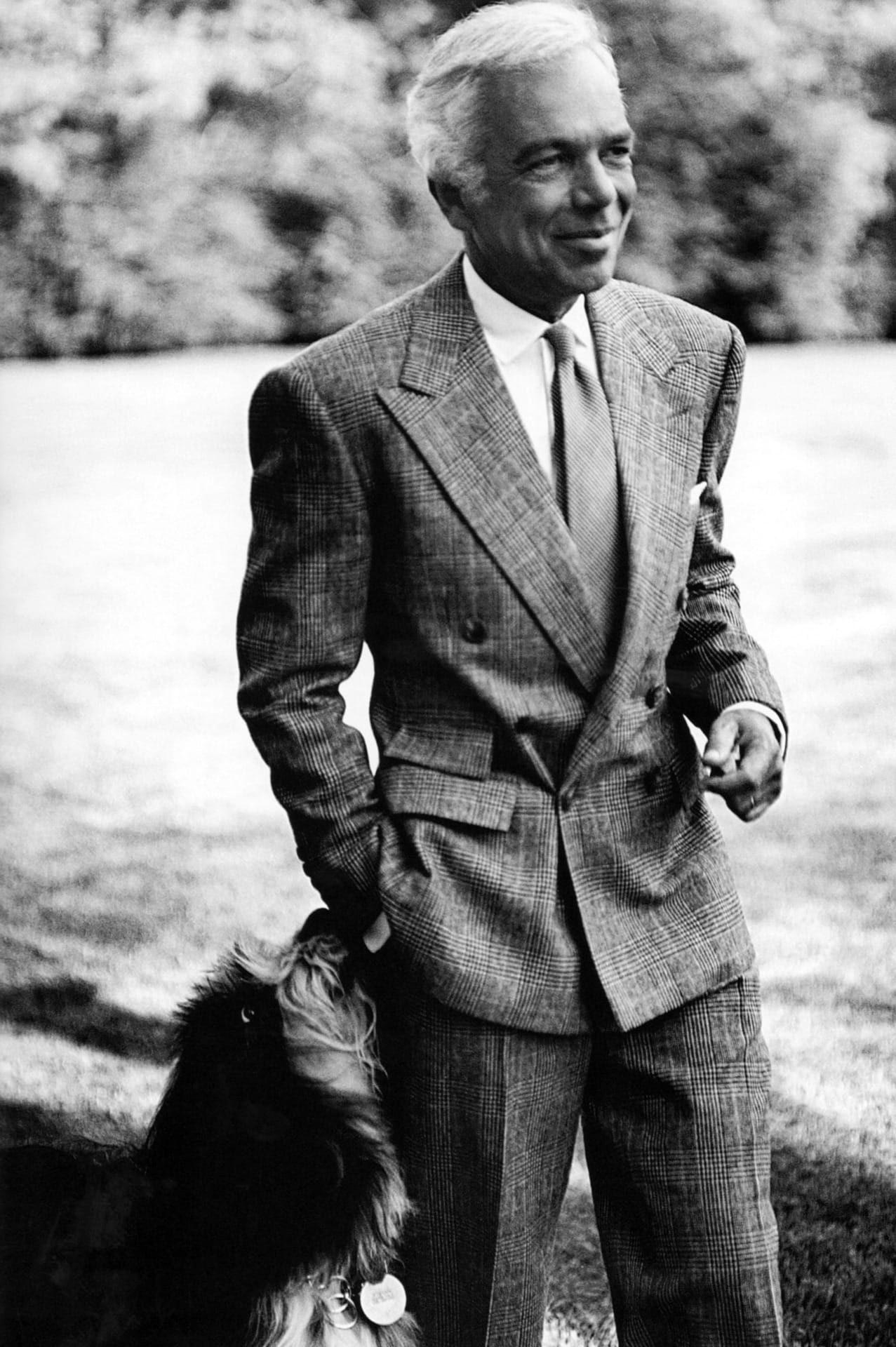
The 6x1
The 6x1 was developed more recently by Frederick Scholte, tailor often credited with inventing the British drape cut. The style has been carried forward famously by Cifonelli. They realized that by lowering the buttoning point, you can elongate the lapel line, make the lapel line more vertical, and lower the nexus to show more shirt and more tie, while maintaining the distinct charm of a double breasted jacket.
So these bespoke tailors managed to develop a cut you'd have a lot of trouble finding off the rack, made to measure, or even bespoke from a tailor that doesn't specialize in the style.
The challenge presented by the 6x1 (and the similar low 4x1) is that you generally still want the jacket to shape around the natural waist, and not the lower buttoning point. Cinching the jacket at the buttoning pont results in... this, and it's not as good:
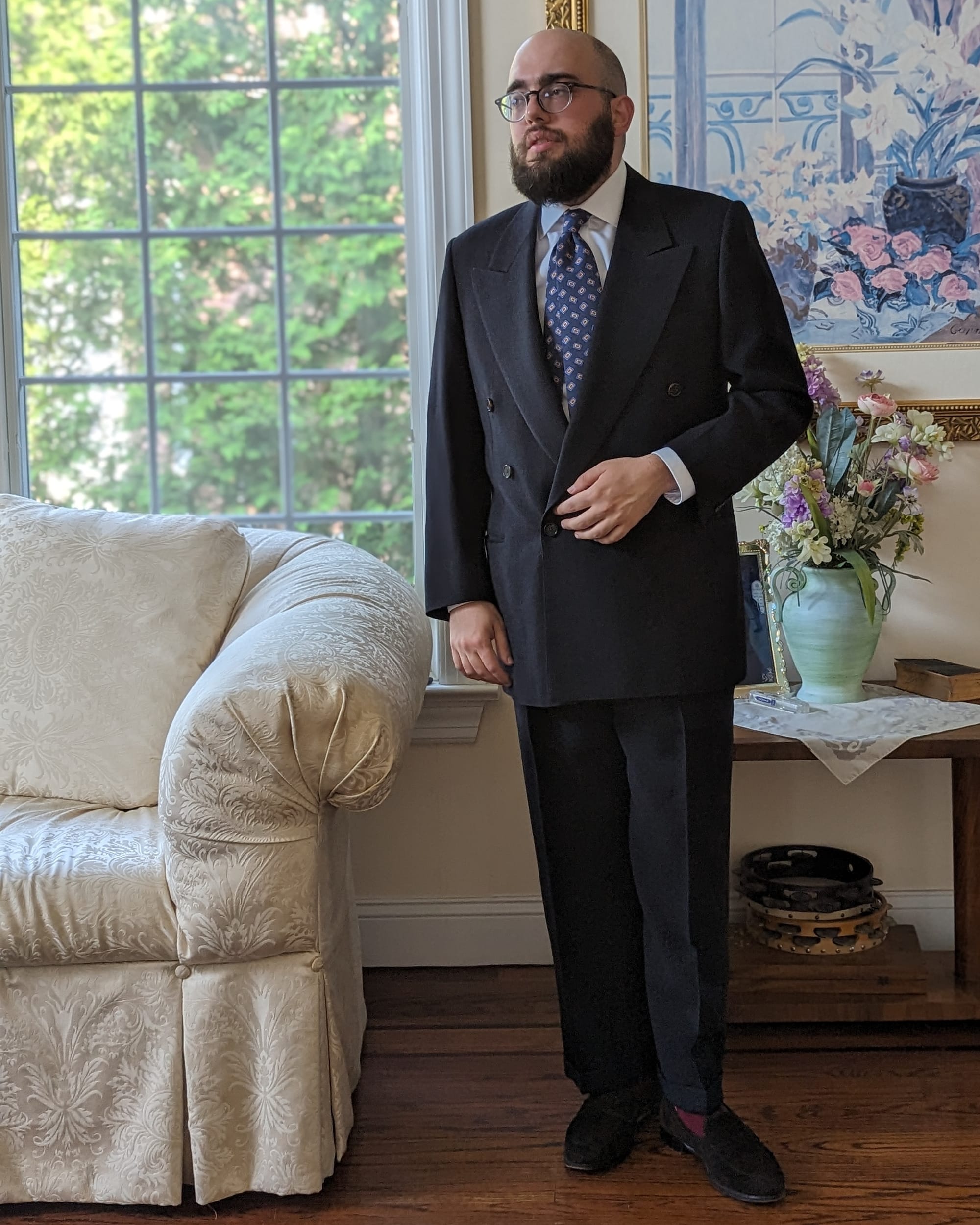
The solution takes a special set of skills. You not only need to cut a jacket to shape itself at the waist, relative to the chest and the buttoning point, you also need to consider the fabric's weight and drape (as it ages), the position of each button (vertical and horizontal), motion, and the risk that the lapels might buckle, even when anchored by an anchor button. The lapel should also roll smoothly to the one (the bottom button). Accordingly, a 6x1 is among the most difficult suit styles to fit.
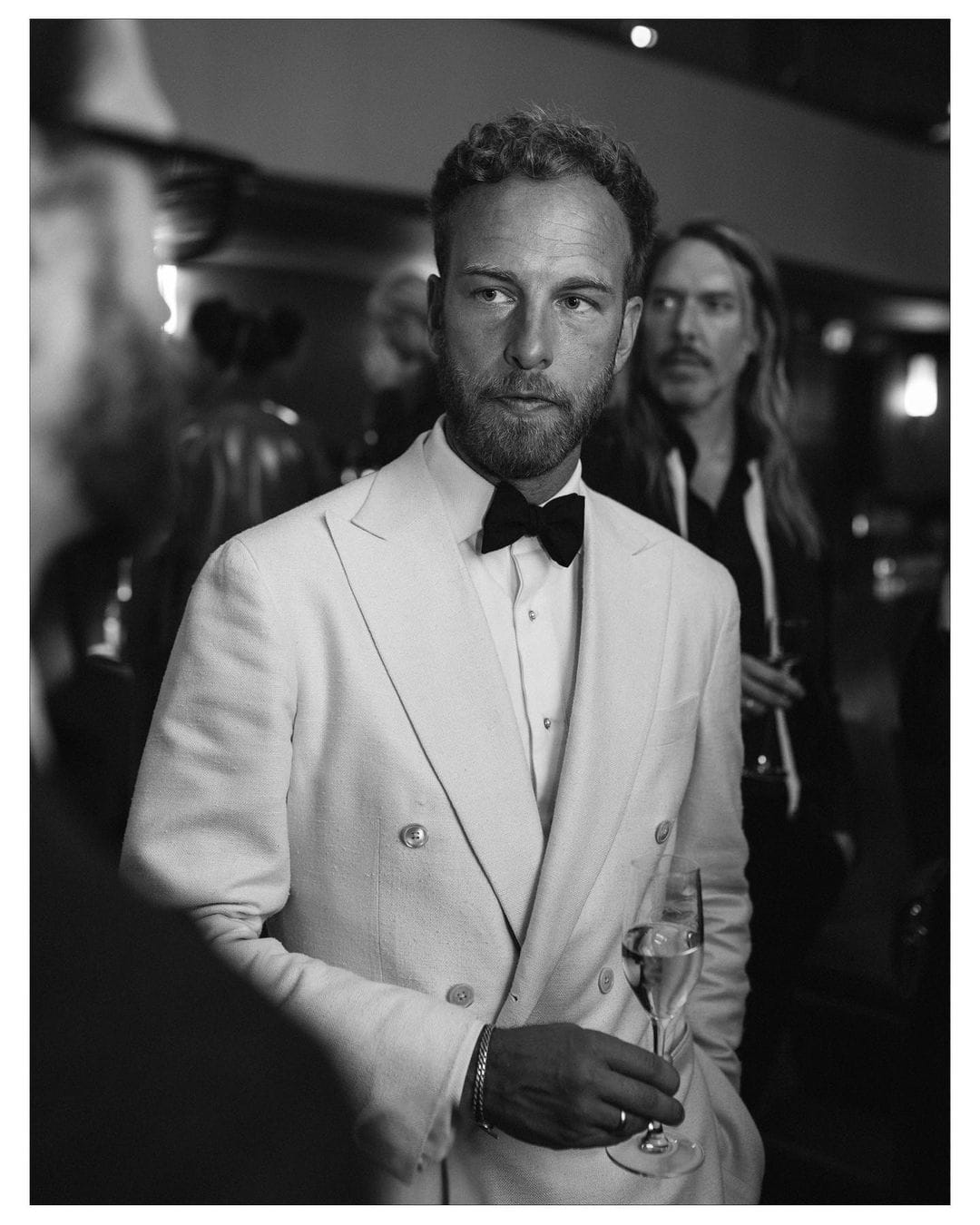
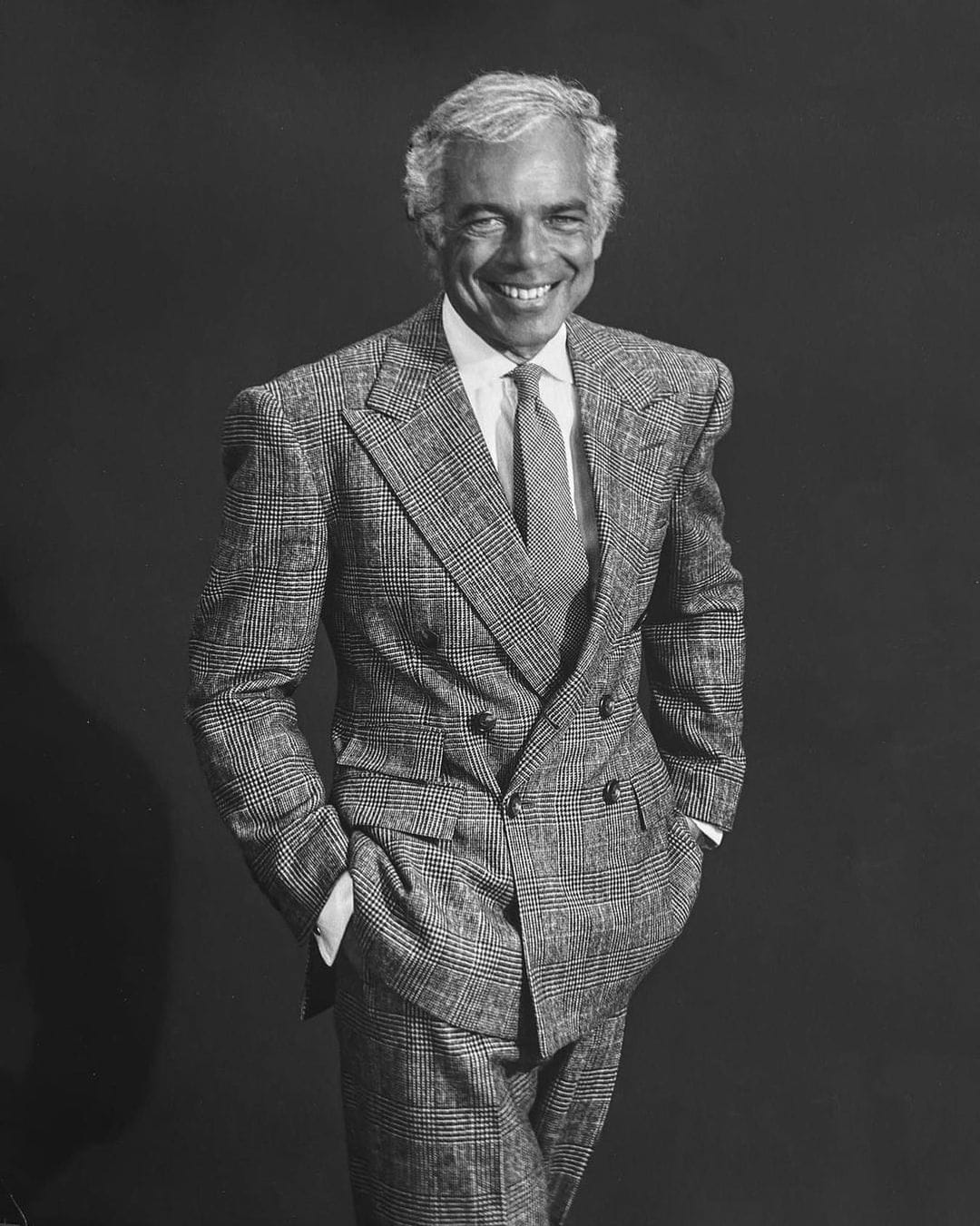
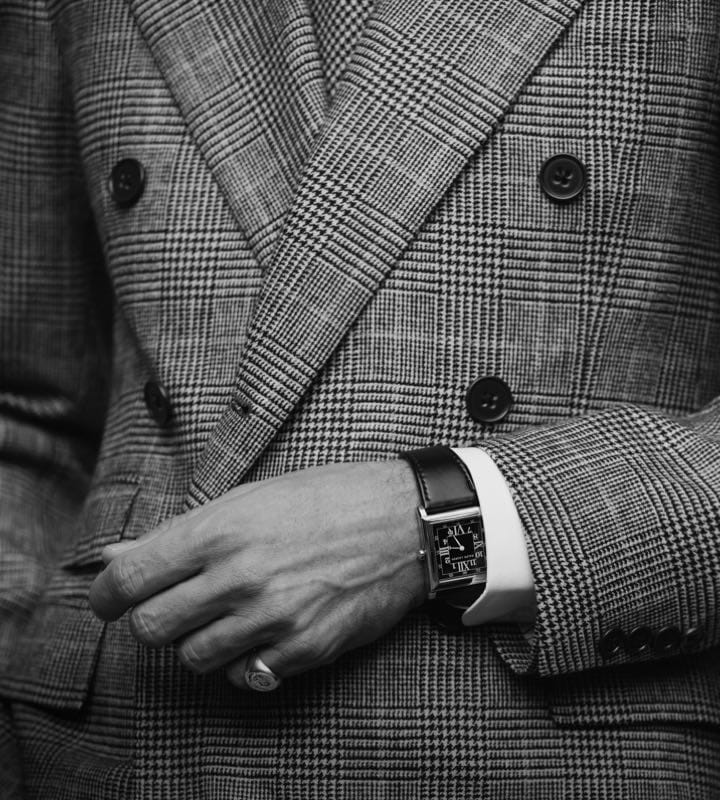
Andreas Weinas, probably wearing Ralph Lauren; Ralph Lauren, wearing Cifonelli; Another ad for Ralph Lauren. Yeah, I know what I like.
The format was popularized in the mid-80s, partly by Ralph Lauren—more on the Polo suit in a bit—but largely by Giorgio Armani. Armani's cuts were intentionally long, unstructured, and relaxed, with fabrics meant to highlight a certain louche, slouchy drape.
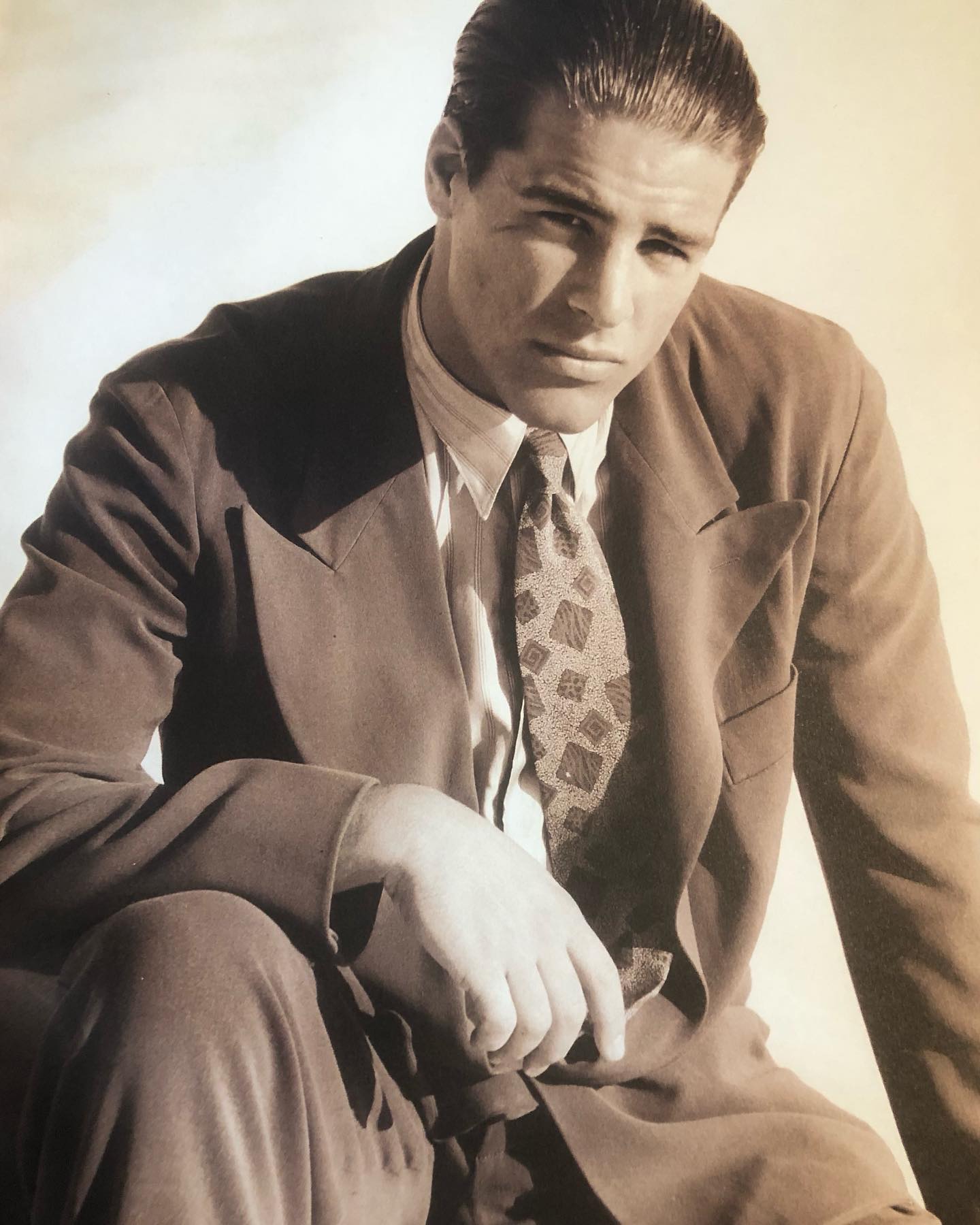
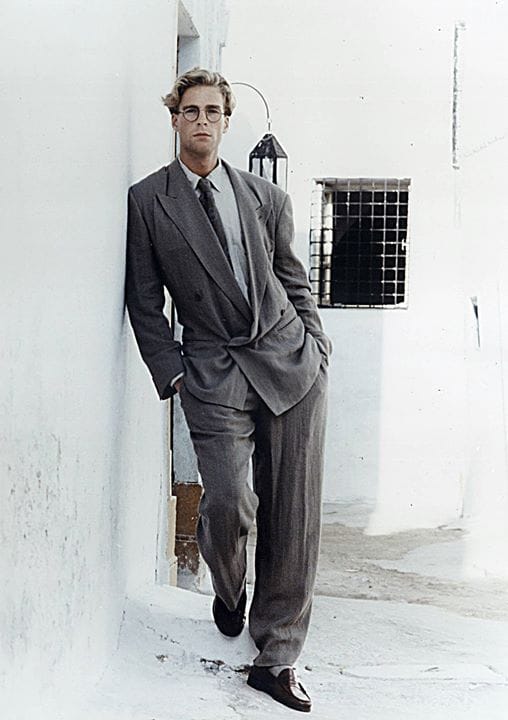
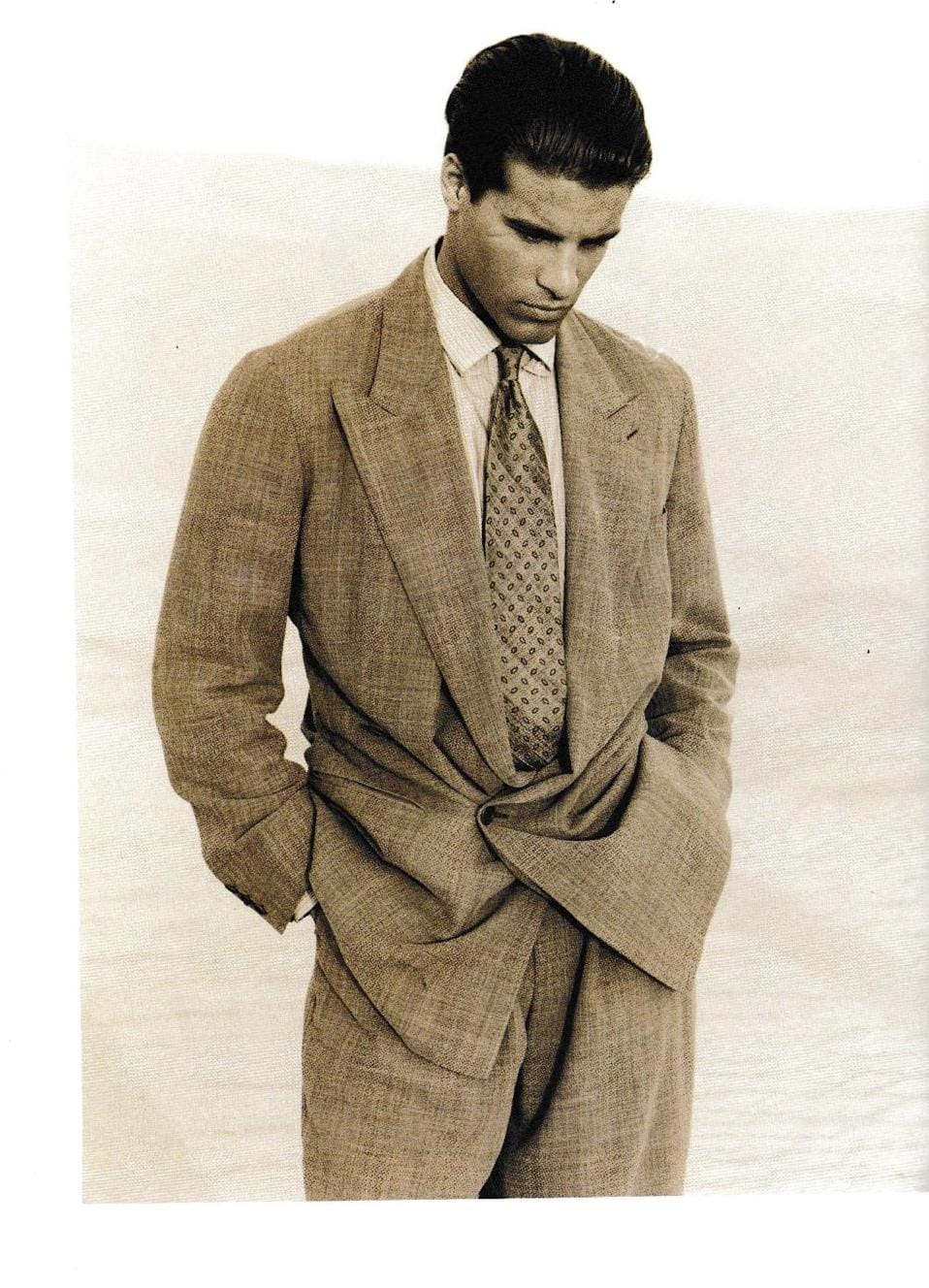
Armani DBs aare meant to have a different effect, although many ended up wearing them somewhat like a standard 6x1.
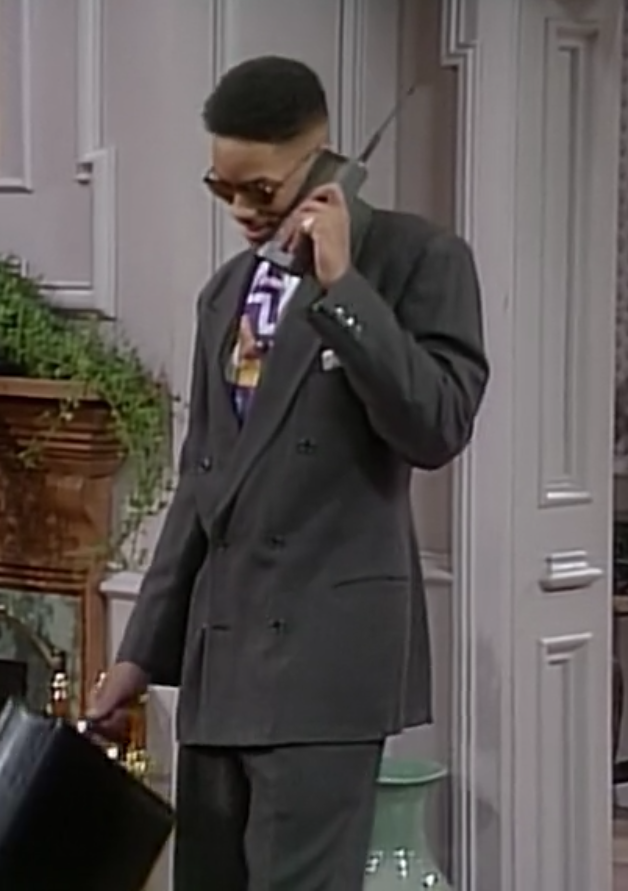
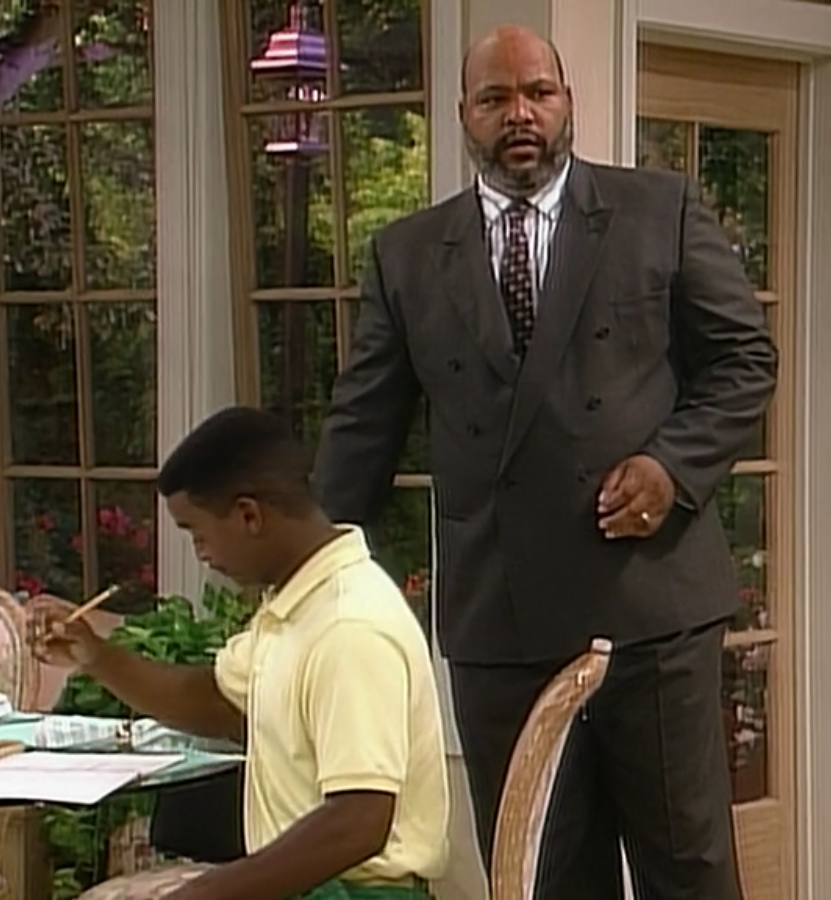
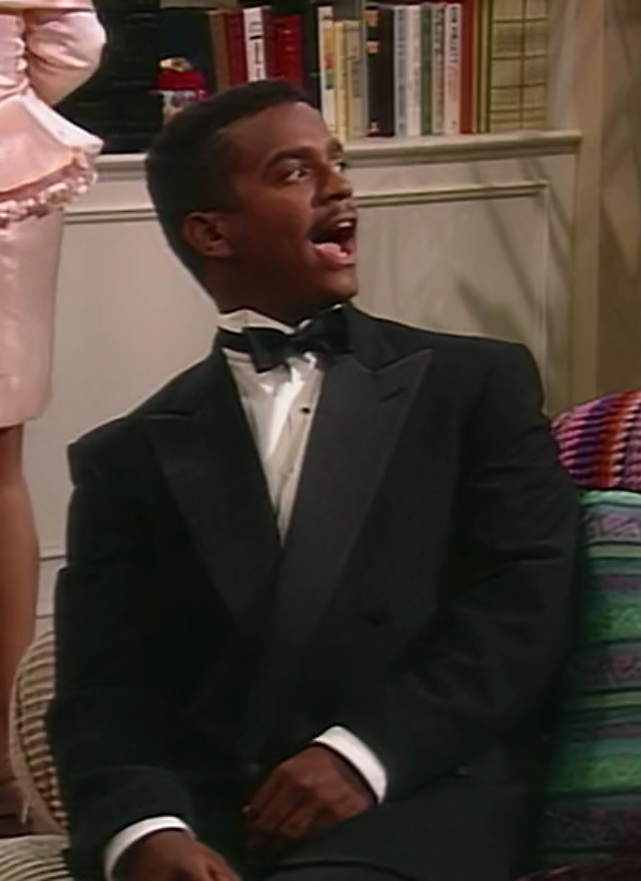
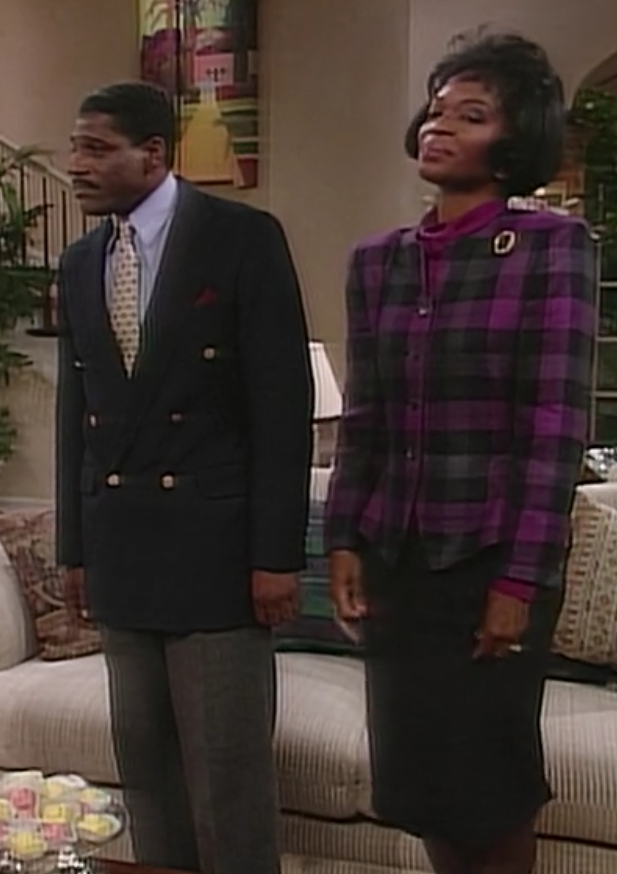

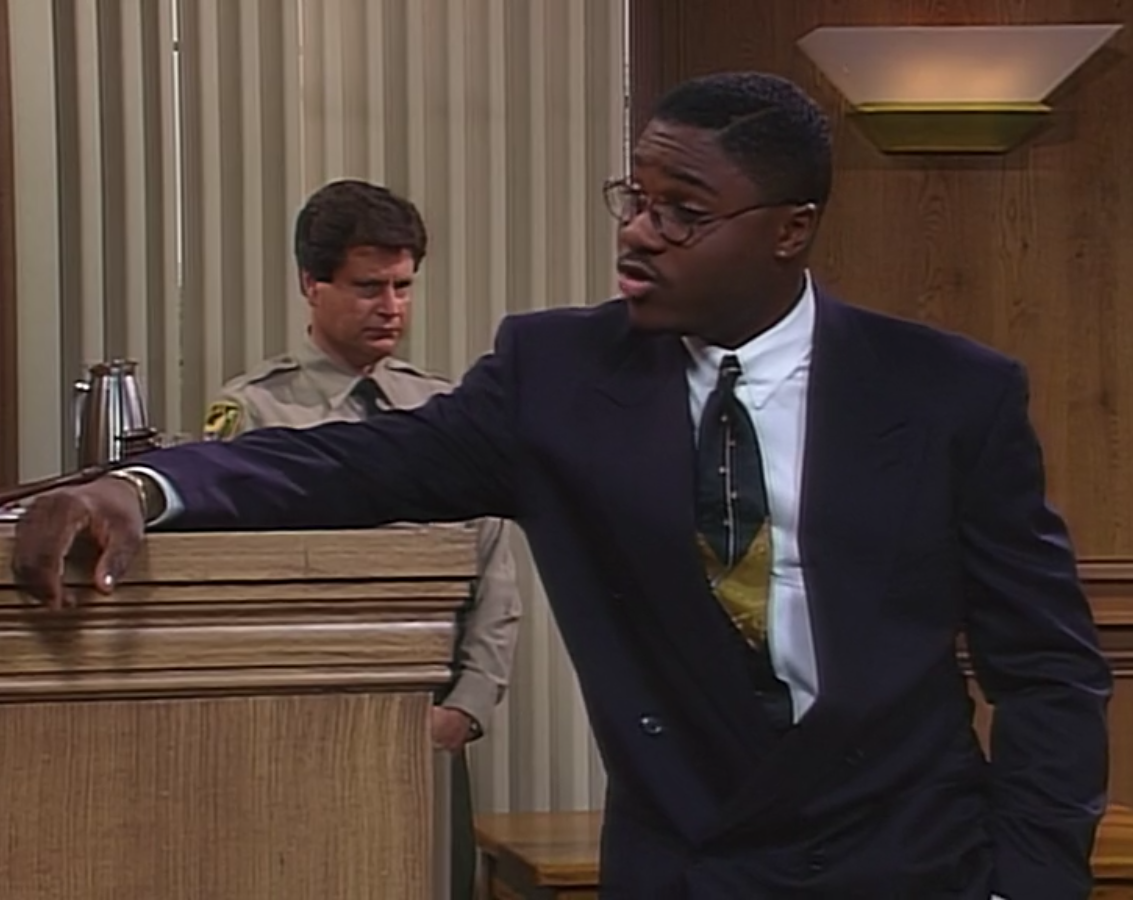
Armani's 6x1s, as seen on The Fresh Prince of Bel Air. They were popular in many TV shows from the early 90s.
As a general rule of thumb, the functional buttons on a transformable db or a 6x2 will be vertically aligned, whereas a 6x1 will often have all of its buttons arranged in a V-shape, since the middle button does not need to function.
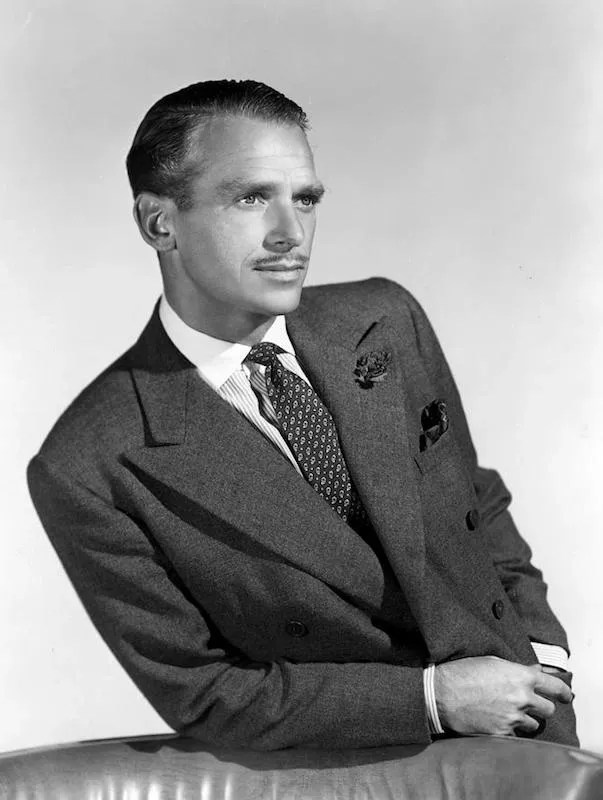
The Transformable DB
So what's harder than cutting a 6x1? Cutting a jacket that can do both. A jacket with a lapel that can roll to the one or the two, has the shape of a 6x1 when worn as one, but also cinches nicely when worn as a 6x2, and whose lapels look great either way. You need to cut both lapels to roll reasonably well to both points—again, considering drape and button placement, including the anchor buttons.
And unlike a true 6x2 or 6x1, a transformible jacket can't really be cut with a bellied lapel, as it needs to roll neatly to two different positions and the lapels need to work at two different angles, but if you want the traditional format of the 6x2 and the long lapel line of the 6x1, a straight lapel might not be a problem.
Caraceni famously developed this style for Douglas Fairbanks, Jr.; the 6x2 paralleled his father's preferred cut, and the 6x1 represented his own personal flair.
You can still buy a Transformable DB from Terry Haste, Rubinacci, or Assisi:
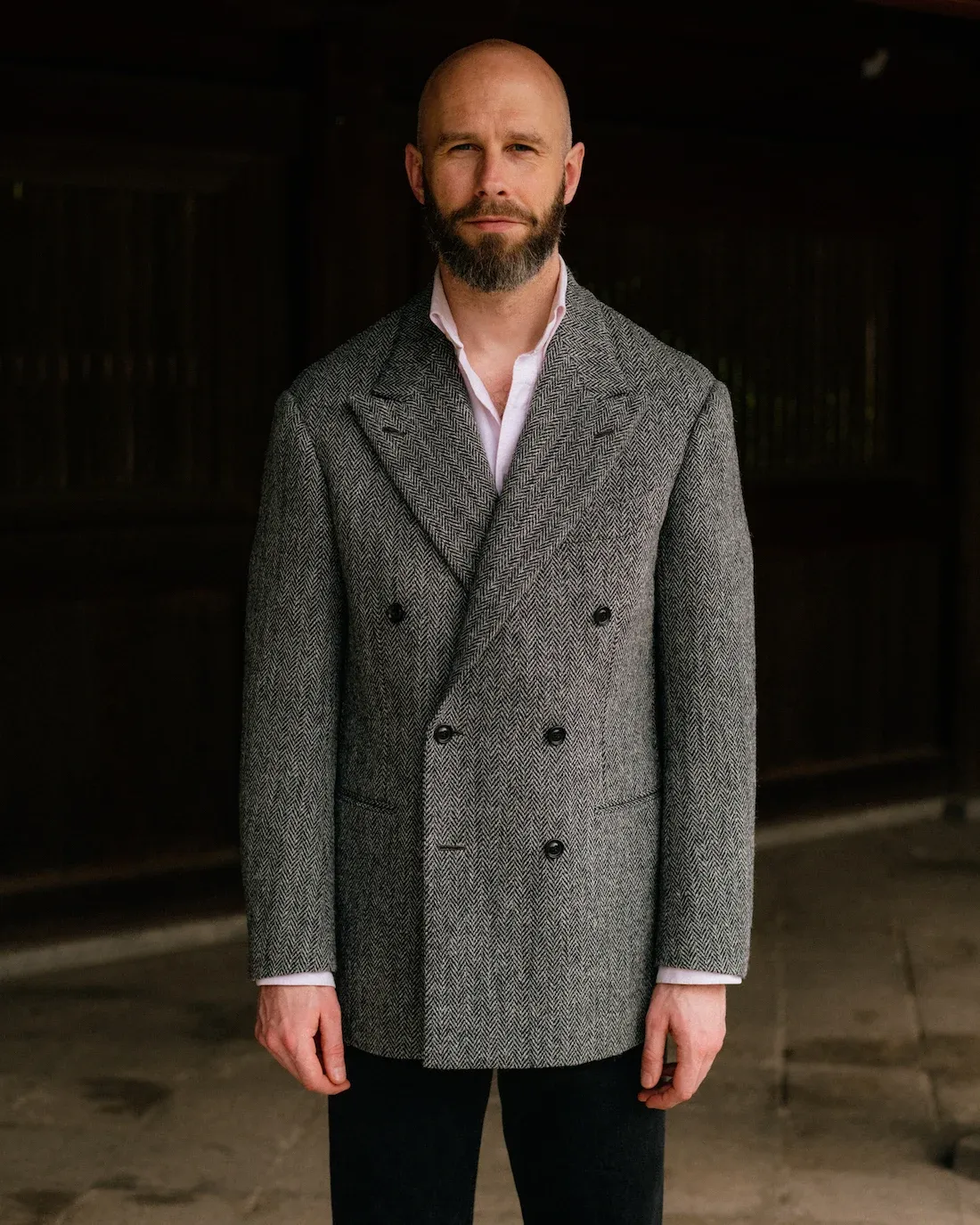
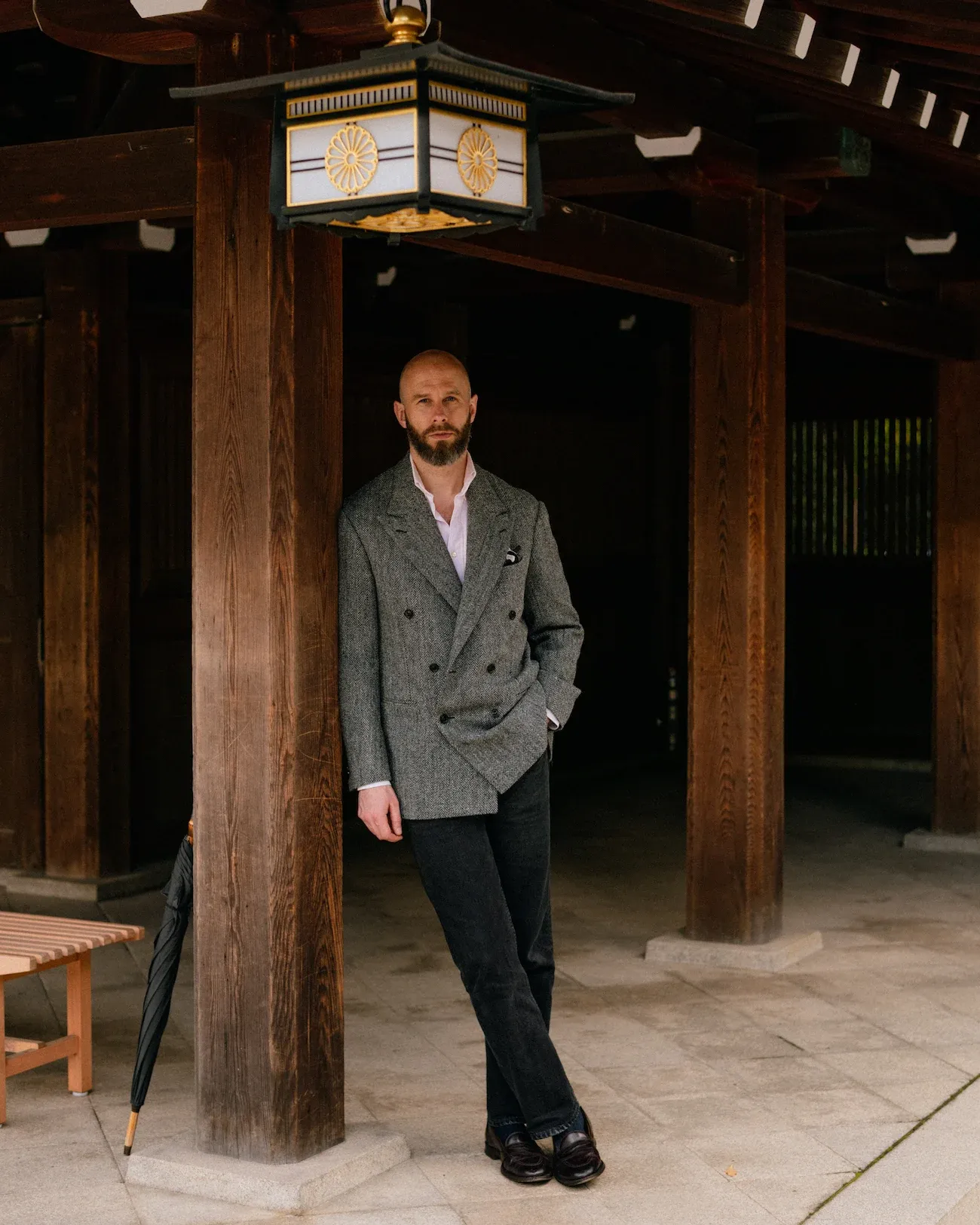
Simon Crompton in a transformable DB from Assisi Bespoke.
Ralph Lauren saw Douglas Fairbanks, Jr. in one of these suits and found himself inspired. Although Ralph's famous suit above is from Cifonelli, the suits sold off the rack by Polo Ralph Lauren at the time were actually intended as transformables. Of course, it was hard to get the perfect fit both ways off the rack, but when I ordered one off eBay, I was happily surprised. This is what it looked like right out of the box:
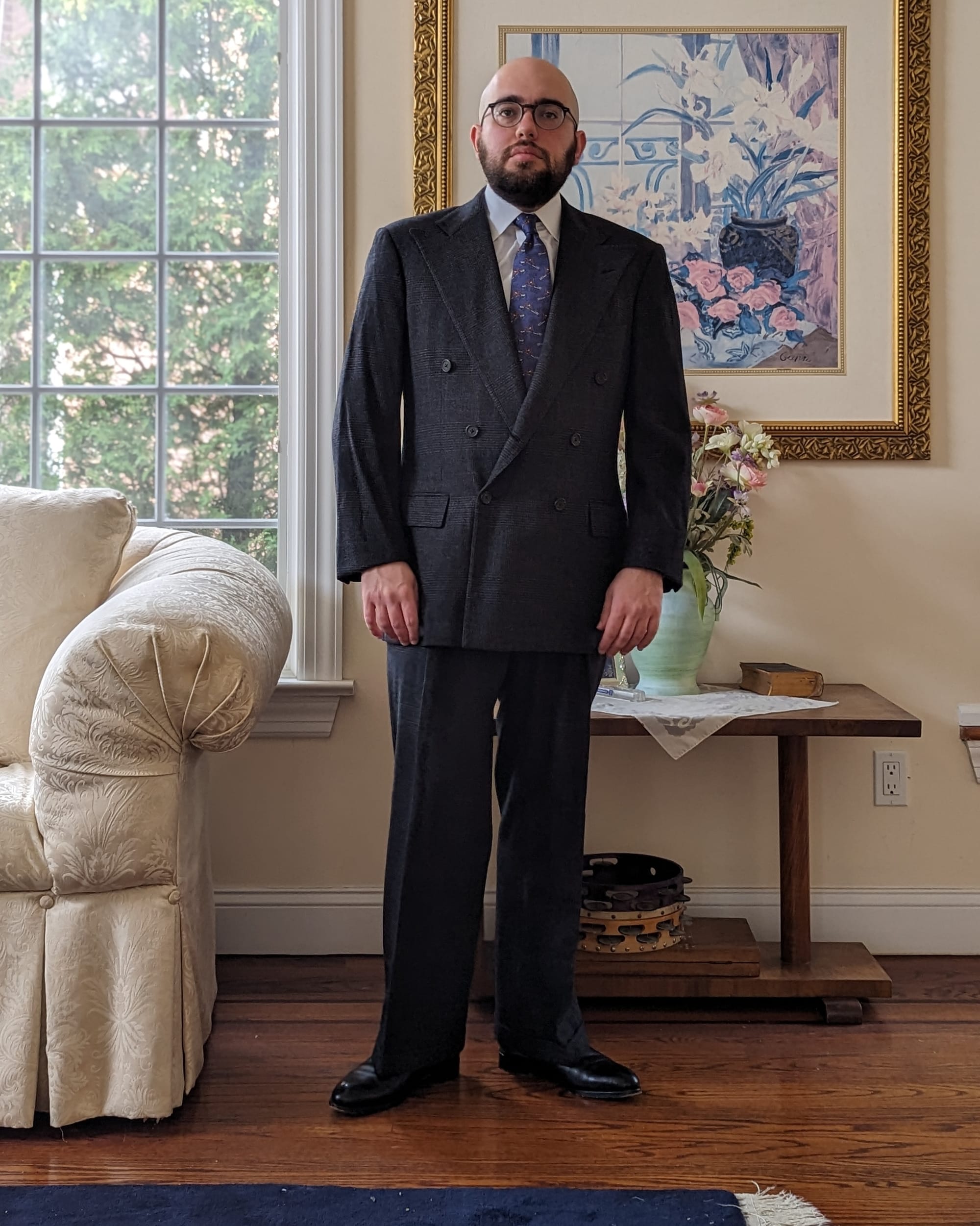
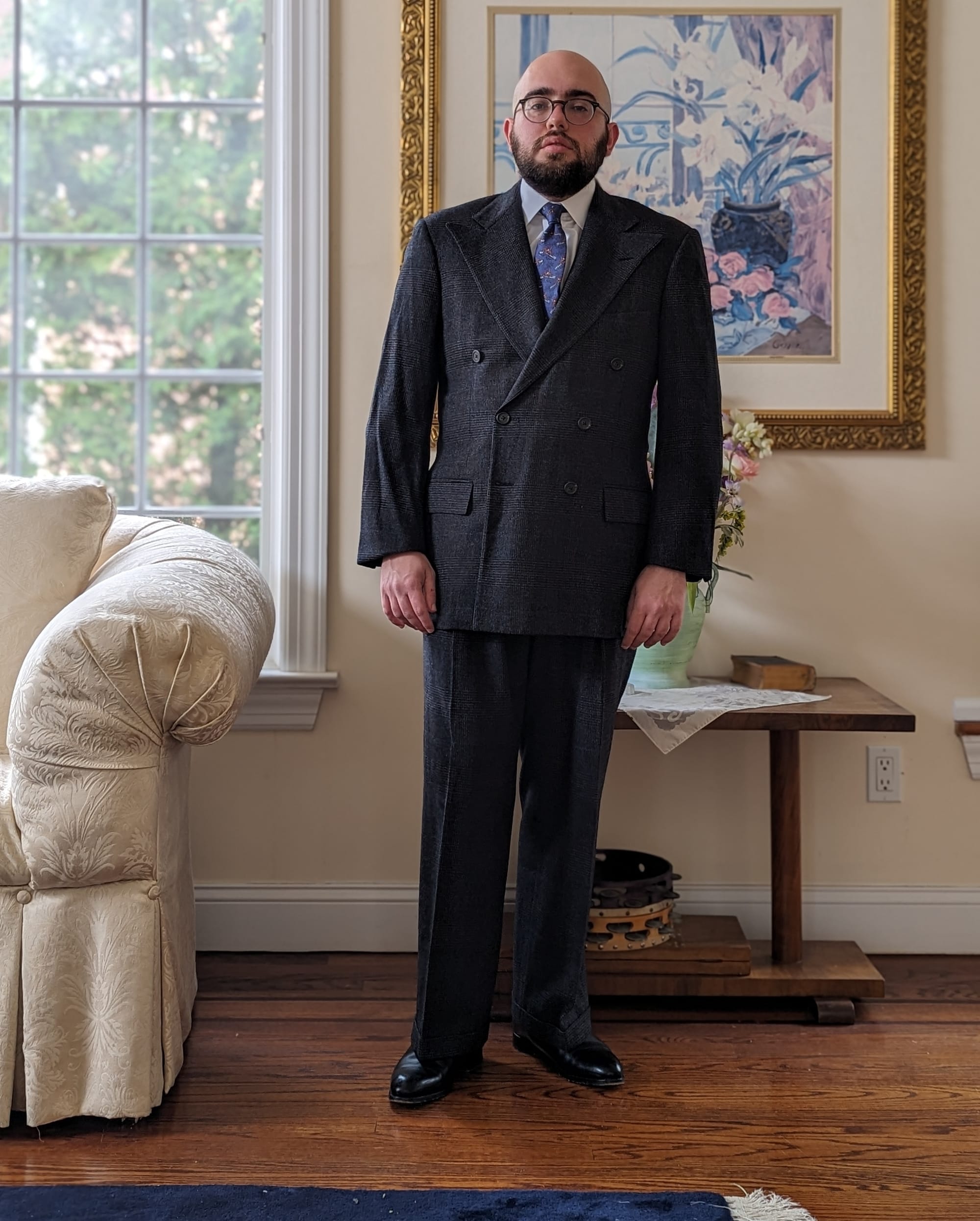
I definitely believe this suit rolls better to the one, but either way, this is the definition of serendipity. Oh, and here it is in motion.
Further Reading
- Hallmark of the Sartorial Rebel: The 6x1 Double-Breasted Jacket
- The characteristics of the Double-Breasted Jacket | The Rake
- Assisi bespoke double-breasted tweed: Review | Permanent Style
- I Love the DB | A Little Bit of Rest
- The double-breasted section of my own article on dark brown linen

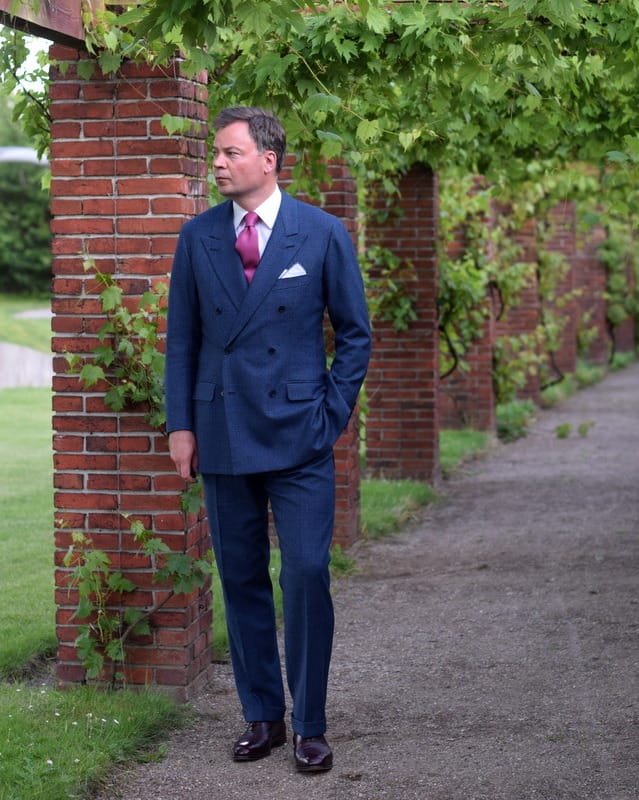
Torsten wearing a 6x1 and 6x2. What other differences do you notice between these suits?
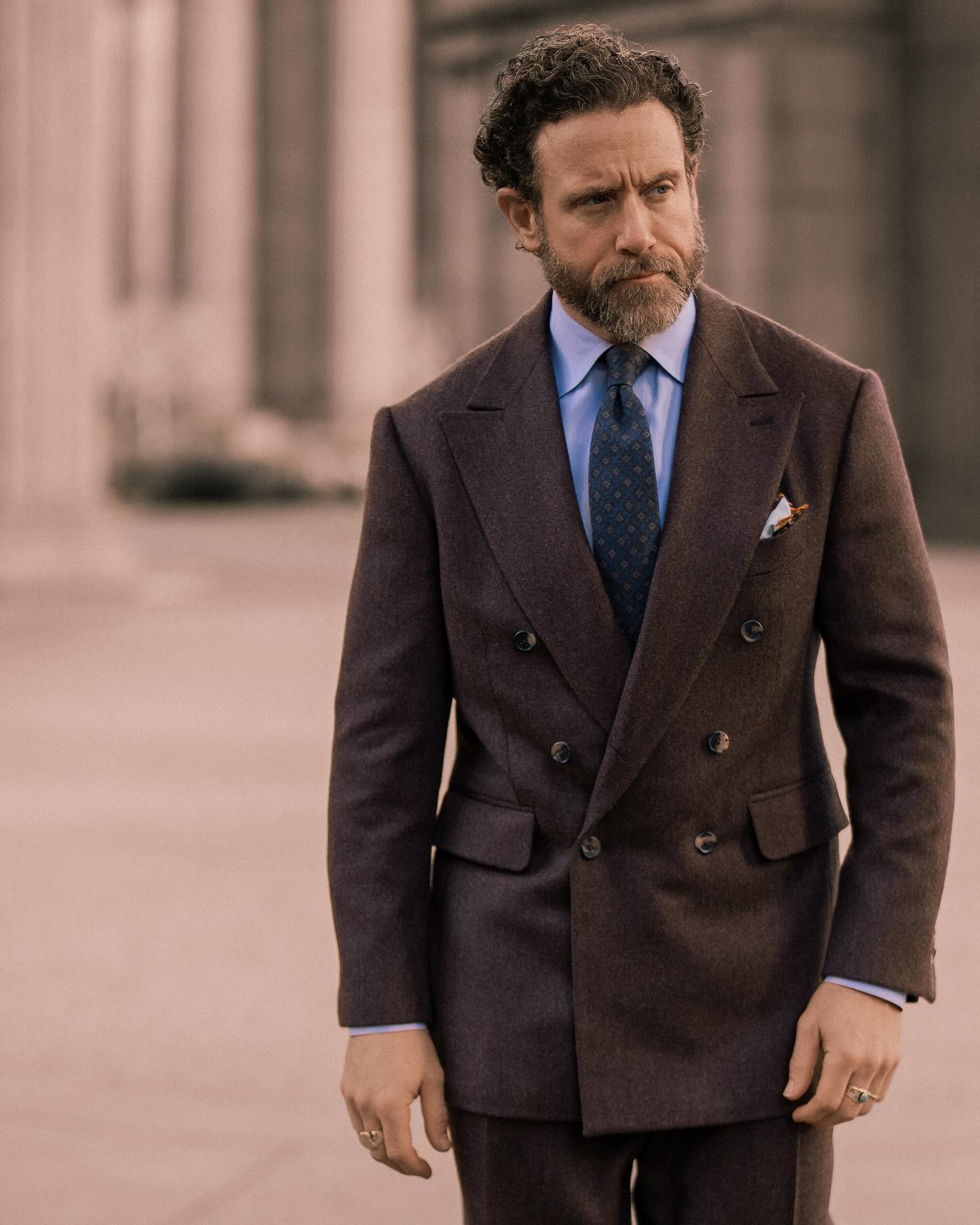
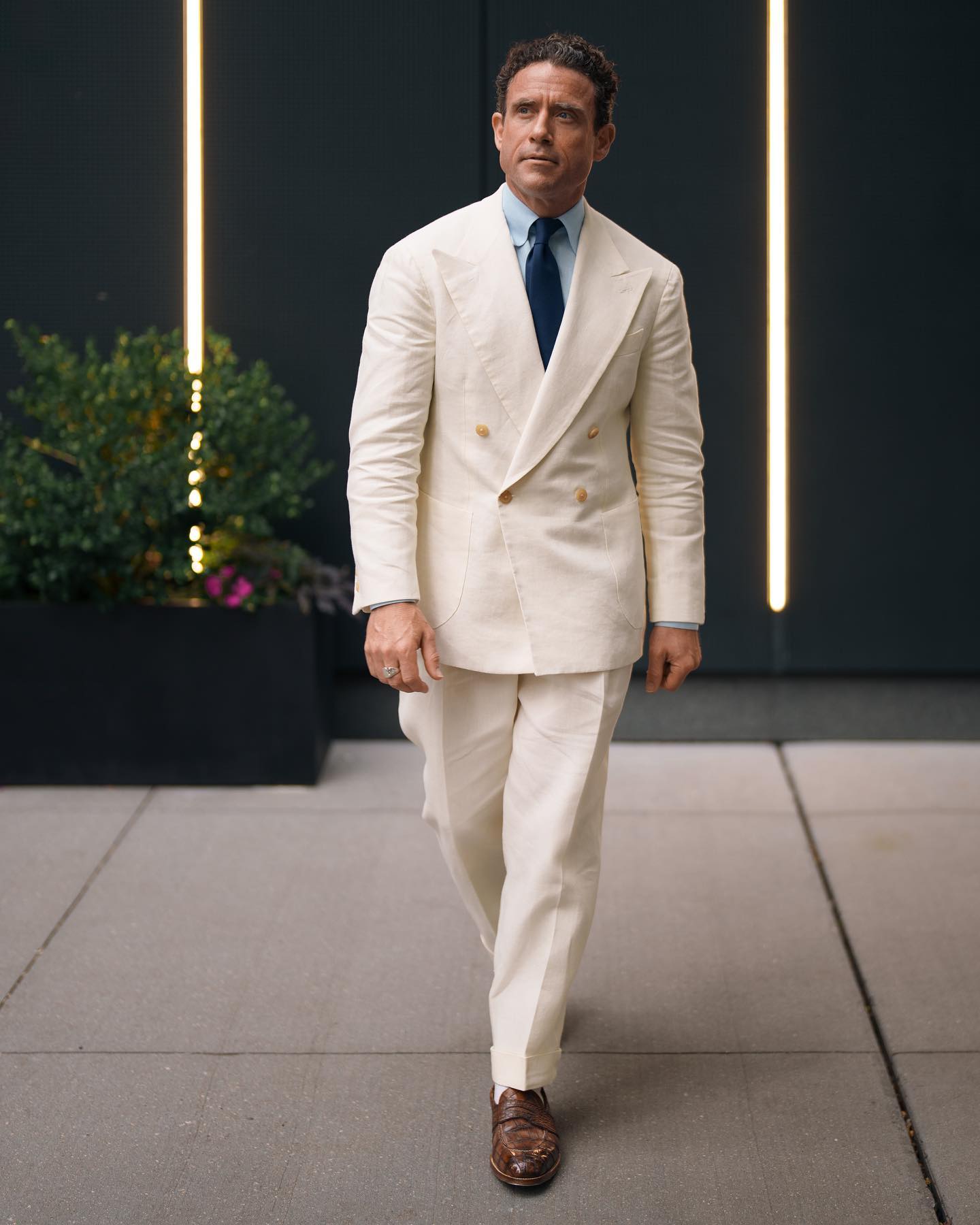
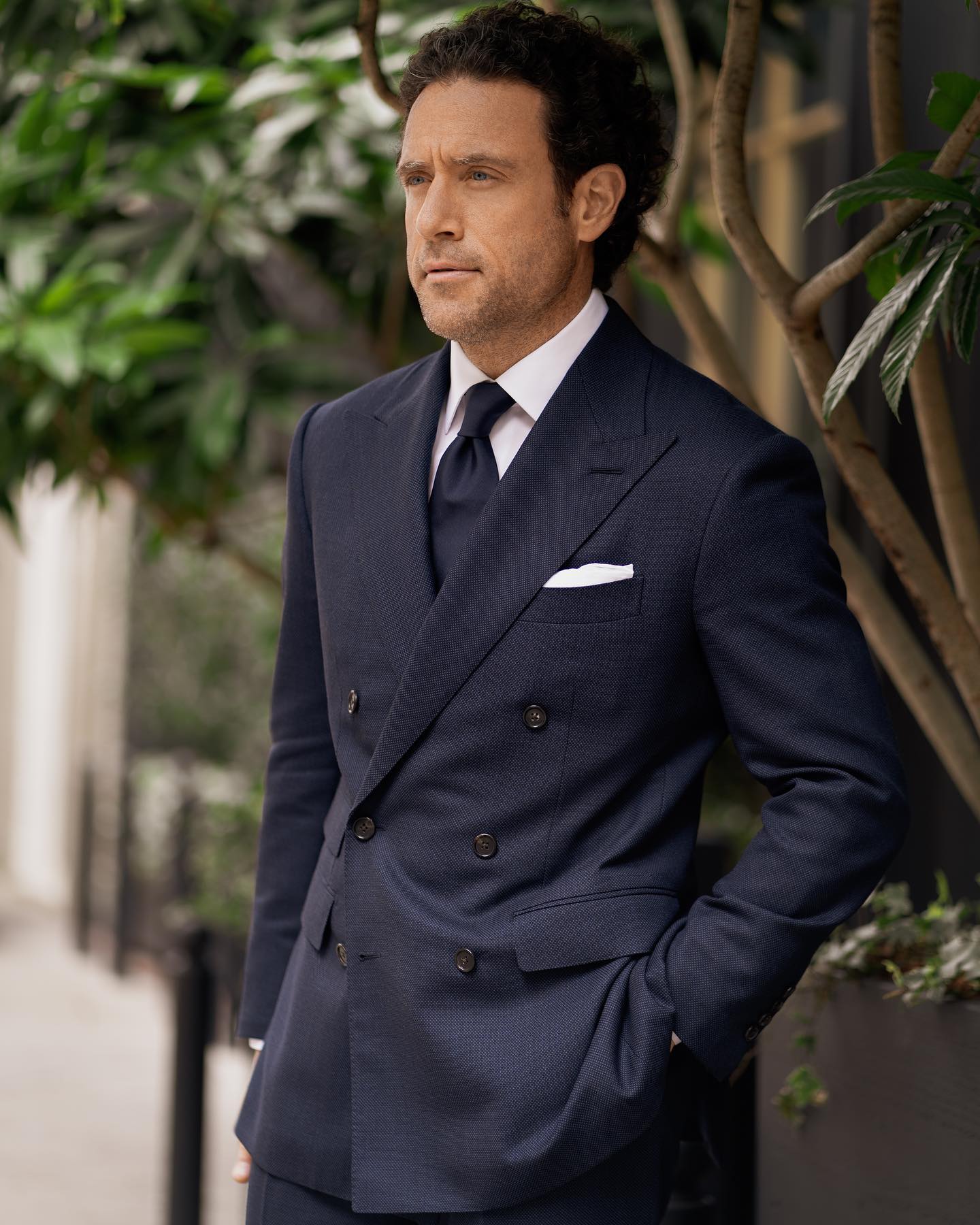
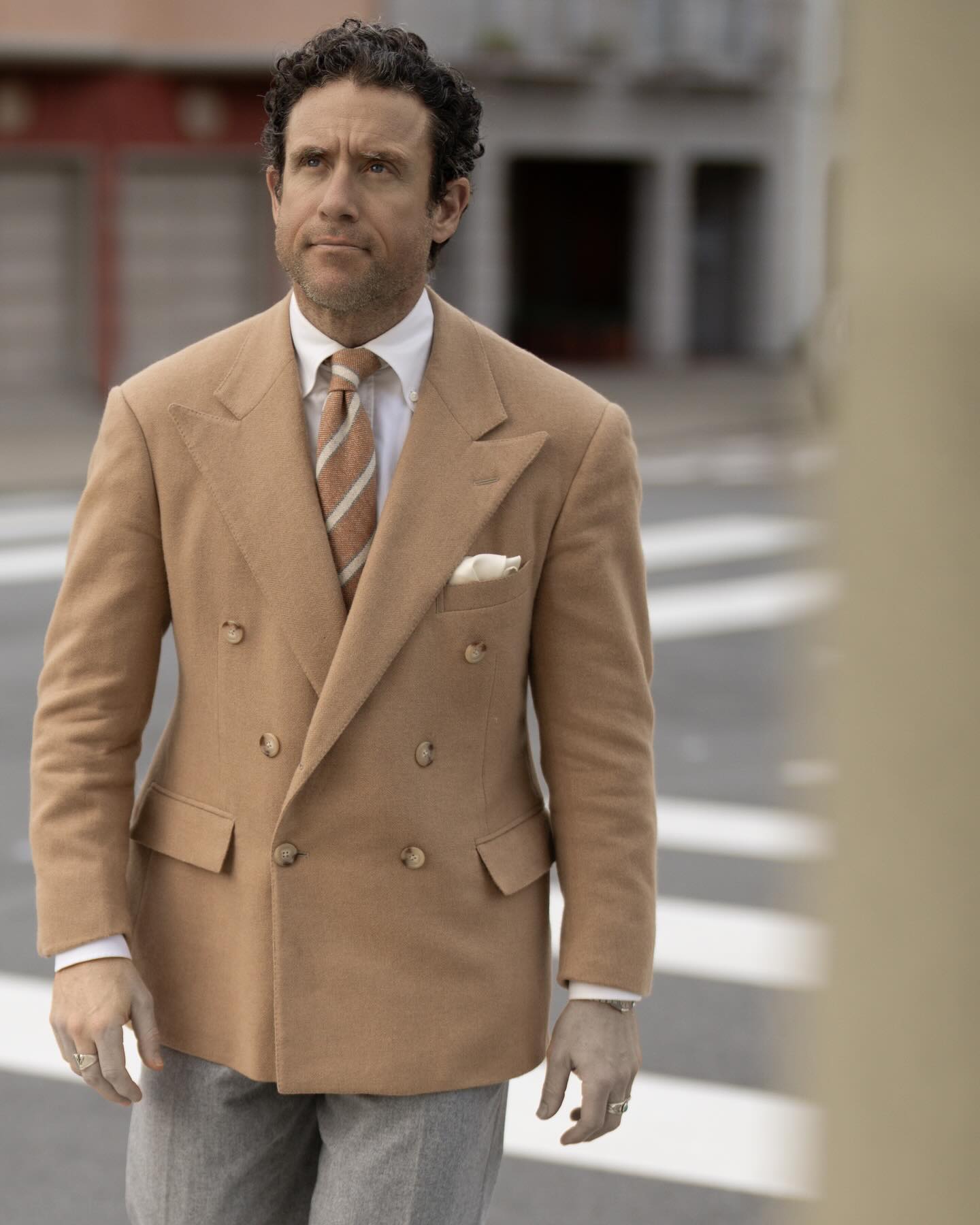
Peter Zottolo in various formats of double breasted jacket, including a high-ish 4x1.



